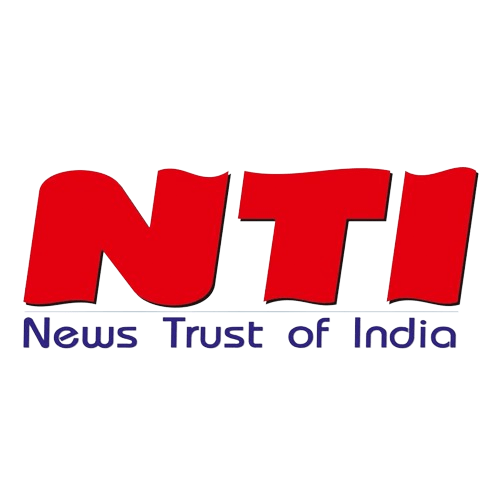Three crucial characteristics demand attention while creating written content: “perplexity,” “burstiness,” and “predictability.” Perplexity assesses the complexity of text, whereas burstiness analyzes sentence changes. Predictability, on the other hand, is concerned with the likelihood of anticipating future phrases. Human authors have a stronger burstiness, easily blending big and sophisticated words with short ones. In contrast, AI-generated sentences frequently use a more consistent cadence. As a result, as I begin the process of polishing the following discourse, I am constrained to seek for your assistance in infusing a significant dose of bewilderment and burstiness. Furthermore, a hint of predictability is best avoided. Please limit your use of the English language to only that. Allow me to rephrase the following passage:
Anuruddh Mishra’s life took an unexpected turn at the age of 27 when he was diagnosed with rheumatoid arthritis following a blood test. His fingers throbbed with anguish, casting a looming shadow over his future and even robbing him of his mobility. After a few moons, a later checkup revealed a less frightening truth: the discomfort was caused primarily by a lack of Vitamin D and an increase in uric acid levels.
Mishra began on an inquisitive journey, resulting in the formation of a healthcare technology firm. His venture’s foundation: individualized health cards backed by technology innovation. These cards would promote prevention as the primary protector against potential ailments, relegating treatment to the last resort.
Mishra, an IIT Varanasi alumnus, teamed up with Anand Rao, an enterprising spirit and venture financier, to launch “Get Beyond Health” in August 2022. This Bengaluru-based startup’s mission unfolds as an accurate health report card suited to the populous, particularly Indian nationals. Congruence with the nation’s distinct qualities remains critical.
Promoting Health Reform for the Indian Population
Mishra challenges conventional wisdom by doubting the effectiveness of the standard lipid profile test in determining human cholesterol levels. The apolipoprotein B test, in his opinion, provides a more accurate reading. He claims that many laboratory measures are the result of randomized tests on people who are unrelated to India’s genetic tapestry, putting diagnostic precision at risk.
The business takes on the monumental challenge of gathering a vast reservoir of medical and health data from various sources, a reservoir that will serve as the foundation for a more precise individual assessment.
“Our thought process was deeply rooted in deciphering the needs of the Indian populace, thereby amassing data that resonates,” Mishra explains.
The pursuit requires a complex web of data points that includes blood biomarkers, biological age, and culminates in the creation of personalized scorecards. It becomes clear that the success of this enormous project is dependent on the acceptance of technology.
At this point, the healthcare startup is fanning the flames of algorithmic innovation, attempting to transform raw input data into meaningful rankings. This method generates a swarm of grandiloquent language models, each tasked with transforming the cacophony of data into a symphony of correctness.
Nonetheless, the difficulty continues. The modern denizen’s trek for knowledge via Google may provide lots of material, but context remains elusive, as Mishra observes, “Google is a tome of knowledge devoid of context.”
Understanding the Mechanism
Users are rewarded with a detailed health rating after uploading their laboratory reports to the platform. This digital dossier is woven from numerous threads, including age, family history, lifestyle, and the tapestry of current health issues. A customised consultation and recommendations are then provided.
“In the aftermath of the unveiling of the health card, we laid before them the realms they should traverse,” Mishra explains.
Consider an incident in which an individual’s irregular dietary habits traced their lineage back to the source of stress, a discovery made possible by extensive diagnosis.
After a series of iterative adjustments, the startup gives birth to “August,” a platform dubbed the customized health coach. Users have the ability to pose various health queries, causing the algorithmic machinery to produce relevant replies in the blink of an eye.
Anand Rao adds nuance, stating that the algorithmic structure assists consumers in connecting with their health data, contextualizing the findings, and ushering in recommendations. As a result, the groundwork has been laid for the development of a personalized health roadmap.
Mishra emphasizes that every claim made by Get Beyond Health is founded on science and is embellished by a tapestry of study. The startup has a coterie of about a dozen people, including both technocrats and clinicians.
The startup’s solutions go through a crucible of real-world trials, affecting the lives of varied demographics such as biohackers, fitness aficionados, and runners. The pioneering outcomes, which have been acclaimed as inspiring, have benefited a large number of people.
The startup’s health examination platform evolves from prototype to commercial viability, becoming the “August” platform. The plan is to enlist a variety of groups, creating a canvas that yearns for 10,000 users and an avalanche of 200,000 enquiries.
The firm is set for growth, bolstered by a technology infrastructure that automates a variety of procedures in the field of personalized health cards and recommendations. Get Beyond Health defies categorization by interacting well with a plethora of participants in the healthcare arena. Similarly, the India Brand Equity Foundation predicts that India’s e-health business would grow to $10.6 billion by 2025.
Mishra, firm in his ideas, advocates the foundational ethos of Get Beyond Heath: a worship of prevention, manifested through the channels of behavior, exercise, nutrition, and supplements, transcending the mere mantle of a curative platform.


